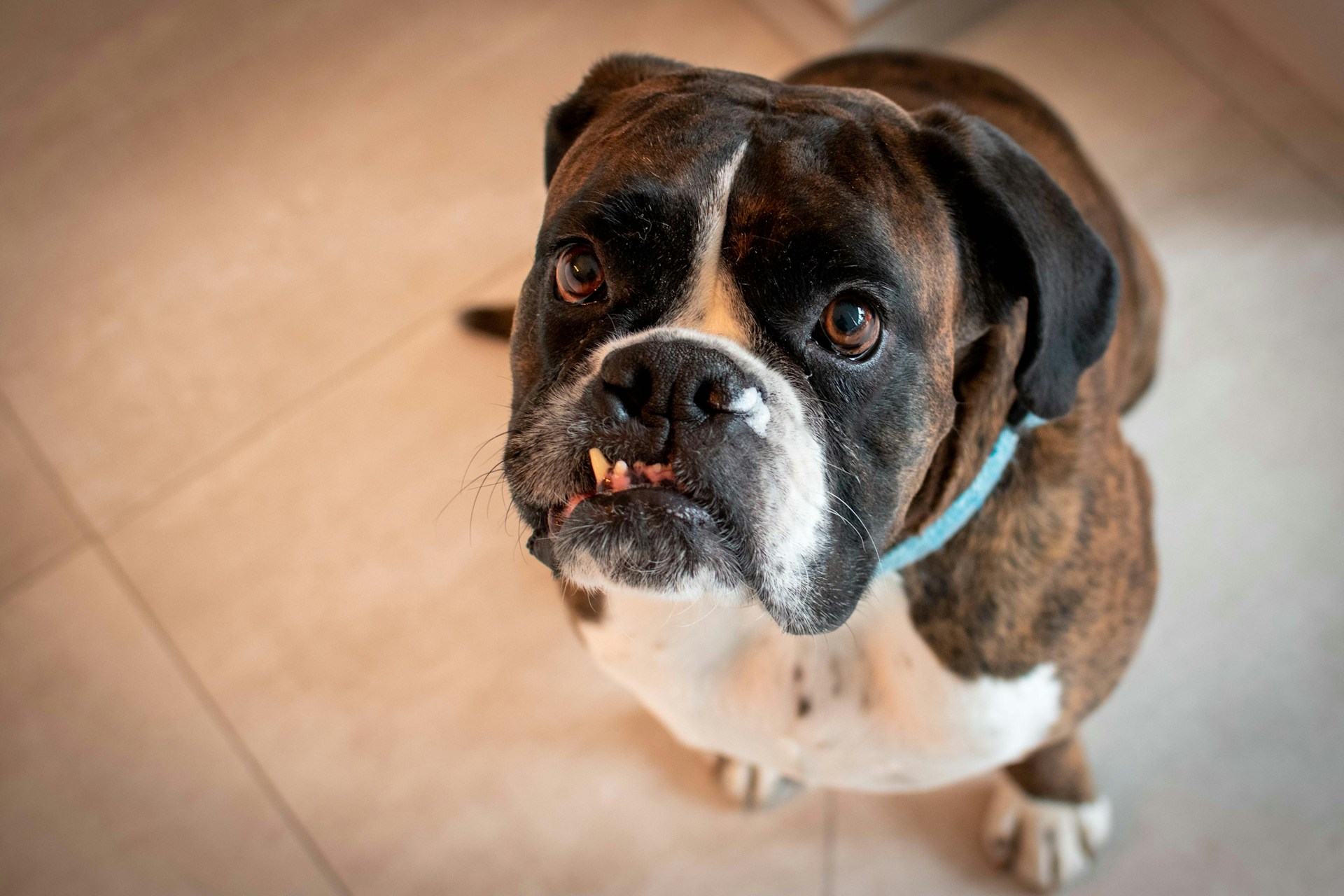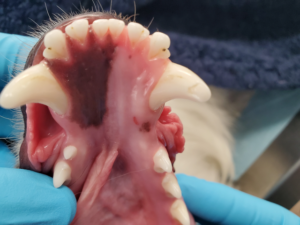
29 Nov What It Means When Your Dog Has a Missing Tooth, And Why You Should Care
Most adult dogs have 42 teeth – 12 incisors, 4 canines, 16 premolars, and 10 molars. This is ten more teeth than most adult humans! However, sometimes there may be fewer than normal teeth visible in the mouth. Let’s take a look and what can cause dogs to have missing teeth, and what to do about it.
Three Reasons Why Dogs Have “Missing” Teeth
1. Maybe they’re born with(out) it
Occasionally, dogs may just not develop the normal number of teeth. Sometimes, they may have a deciduous (baby) tooth that remains in that spot instead. As long as the deciduous tooth is healthy, it is fine to leave it there. It is important to remember, however, that baby teeth are weaker than adult teeth, and may be more likely to break.
2. Maybe they were there, but now they’re gone
Sometimes a dog may lose teeth, either because they fell out due to severe periodontal disease, broke off, or were previously extracted. Most pet owners would know if their pet had teeth extracted, but sometimes dogs are adopted with little to no information about their pasts.

In this dog’s mouth, the right mandibular first premolar is absent.
3. Maybe they’re hiding
Sometimes a tooth will appear to be missing but is actually present buried within the bone, meaning it never erupted into the mouth. It is always recommended to remove these teeth, as embedded or impacted teeth can lead to the formation of dentigerous cysts.

A dentigerous cyst involving the right mandibular first molar.
Dentigerous cysts are fluid-filled sacs that can form around the crown of an impacted tooth. They are typically non-painful but can grow quite large and cause damage to the surrounding bone. It is impossible to predict which impacted teeth will develop dentigerous cysts or when it’ll happen, so the best thing to do is to extract the tooth before it happens. Dentigerous cysts can develop from any tooth in any dog, but are most common in the mandibular first premolars of brachycephalic (squish-faced) dogs.
So, What Should We Do About It?
X-rays! X-rays! X-rays!
Any time a tooth is noted to be “missing” by you or your veterinarian, an intraoral dental x-ray should be taken of the area. The dental x-rays will show if there is an impacted tooth or a dentigerous cyst and will also show if there are any retained tooth roots, which can happen when teeth break off and the gum tissue heals over top. These roots can develop issues, and in some cases should be extracted. Performing dental x-rays of any teeth that appear “missing” will allow your veterinarian or Veterinary DentistTM to catch any problems early, while they are easier to treat.
Treating Missing Dog Teeth in Fort Collins
It can be a concerning sight when you notice your dog is missing a tooth. If you suspect your dog has lost a tooth or have any concerns about their dental health, make sure to consult a board-certified veterinary dentist. The doctors at Animal Dental Care & Oral Surgery Fort Collins are highly trained in treating missing teeth and preventing further issues. Contact us today to schedule an appointment.
Images used under creative commons license – commercial use (11/29/2023). Photo by David Kemptner-Rauscher on Unsplash



